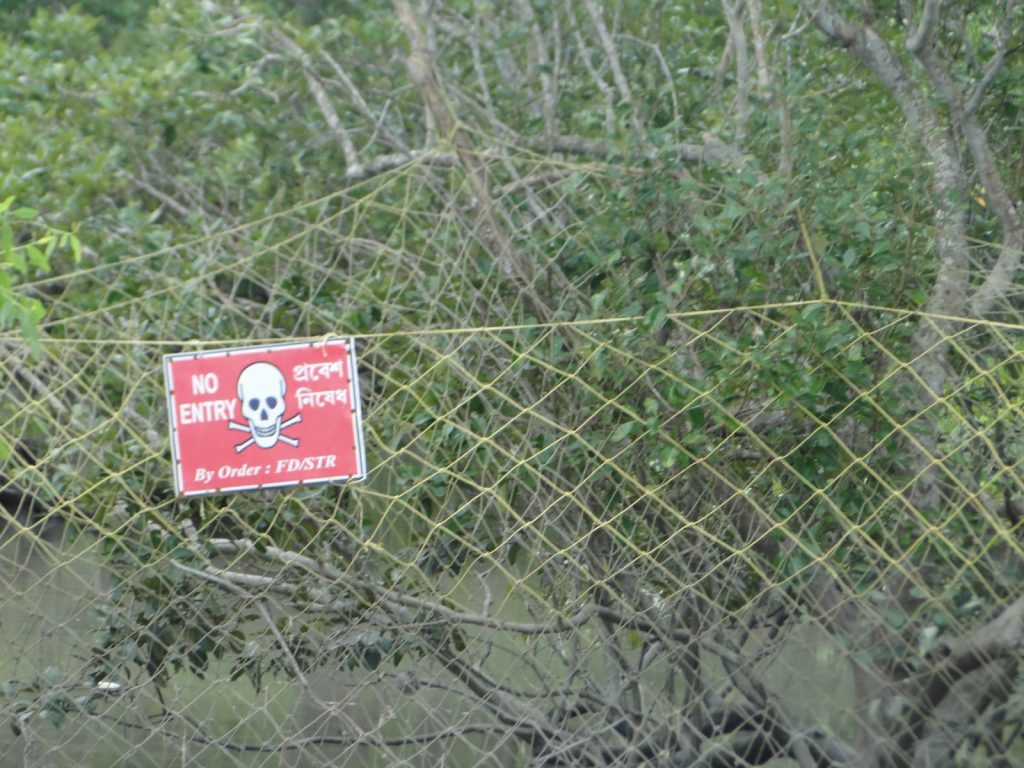From 25-30 cases of tigers entering villages per year in 2010-11 in the Sundarbans, it has come down to almost zero, a data shows. However, five people died in the past four years while they legally entered the forest to collect fish and crabs through permits, writes Deepanwita Gita Niyogi

Climate change is making the survival of tigers tough in the Sundarbans, the world’s largest delta spanning India and Bangladesh. Rising sea level is destroying the Sundari trees, the dominant mangrove species, found in the region. This is impacting tiger habitats.
According to a report published in 2019, there will be a decline in the Bengal tiger population and its suitable habitats in the Sundarbans in the near future.
Due to reduced freshwater inflow in the Indian Sundarbans, salinity has increased. Mangroves species like the Sundari, which thrive in less salty water, are dying. Saline water may give rise to the scarcity of fresh water sources. When natural habitats are destroyed, animals seek out new areas for survival. Sometimes, they enter villages which lead to human-wildlife conflict.
However, Jones Justin, deputy field director of the Sundarbans Tiger Reserve, said there is no direct evidence of tigers straying into villages as a result of water scarcity. Rich in biodiversity, the tiger reserve is spread over 2584.89 sq km, of which the critical tiger habitat is 1699.62 sq km and the buffer measures 885.27 sq km.
But the forest department has nevertheless taken measures such as the setting up of a nylon net fence which has helped. “From 25-30 cases of tigers entering villages per year in 2010-11, it is now almost zero,” Justin added.
A forest officer, who was posted here formerly, said on the condition of anonymity that in other tiger reserves, the animals have territorial zones ranging from 20 sq km to 60 sq km or even more. But this is not true in the case of the Sundarbans. There are some 100 tigers here thanks to Project Tiger and one tiger hardly gets adequate space. Infighting happens between adult tigers and juvenile males over territorial control and the older ones sometimes stray into villages.
Containing the conflict
Prabir Mahapatra from the Tagore Society for Rural Development said that the forest department started the nylon net initiative to prevent human-wildlife conflict. Based in Kolkata, Tagore Society is engaged in rural development and works on climate resilience in eastern India.
Prosanta Mukherjee has been based in the Sundarbans for the past five years and works with communities. His organisation is known as the Society of Integrated Life or SOIL in short. Mukherjee shared that in Samsher Nagar village, historically human-wildlife conflict has always been high. But the setting up of the nylon fencing to tackle human-tiger conflict has worked. The animals do not cross the fencing. The measure has proved to be effective.
According to the Sundarban Tiger Reserve website, the nylon net fencing has played an important role in preventing the straying of tigers from the forest area into nearby villages. A protocol for maintenance has been designed which involves maintenance involving communities as well as forest staff.
Justin said that the nylon net fencing does not cover the villages, but instead covers the forest boundary for a length of 108 km. There has been no incident of tigers straying in the past three years but there have been five human deaths in the past four years while the victims entered legally inside the forest area to collect fish and crabs by using permits.
Precarious existence
The Sundarbans is a maze of islands, estuaries, creeks and river channels. Though fencing has proved to be successful, there have been instances of people being killed in tiger attacks in the Sundarbans as the data above show. Fishermen and honey collectors sometimes get close to tiger habitats.

Susanta Giri of community-based organisation, Baikunthapur Tarun Sangha, explained that people here are poor. Those without lands enter forests for livelihood needs. The use of LPG cylinders is minimal and most people depend on firewood for cooking. At such times, tiger attacks do happen leading to deaths.
Apart from the risk of tiger attacks, rising instances of cyclones are a threat too, forcing people to migrate elsewhere in search of work. Due to a changing climate and rising sea level, there has been considerable submergence and a change in vegetation. The forest area has been impacted.
“There has been an increase in temperatures due to climate change. Salinity has adversely affected the Sundari trees which have decreased in number. They offer refuge to tigers and cannot survive in higher salinity. Now, Byne trees are mostly there as they can survive in high salinity,” Mahapatra explained.
Mukherjee pointed out that the Sundarbans is a monocrop area and has zero industry. Honey collection ensures money but is a seasonal occupation which lasts only for a few months and the gatherers do not get a fair price despite high risk involved in collection. “Crab is the only option for steady income. Crabs are collected and exported. Without proper permits, sometimes people catch illegally.”










